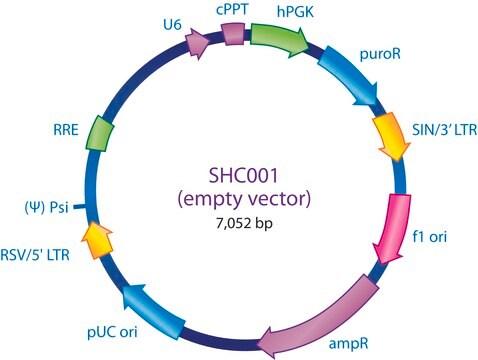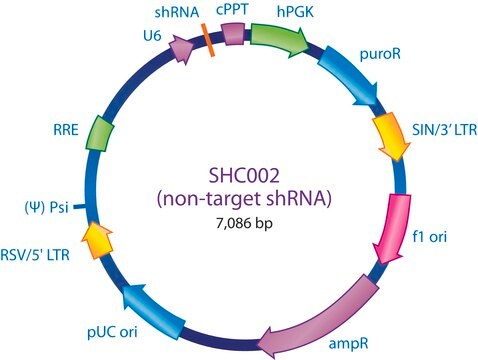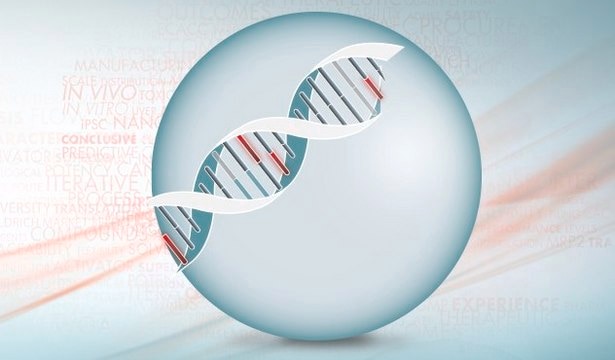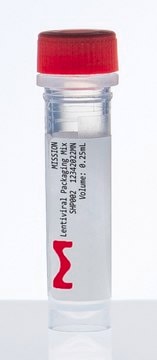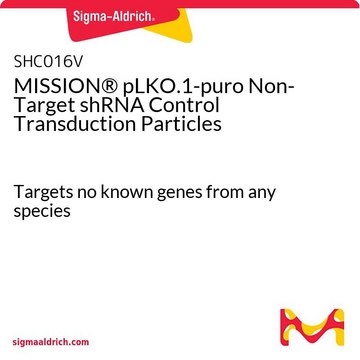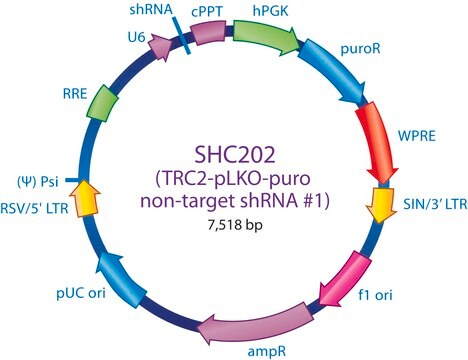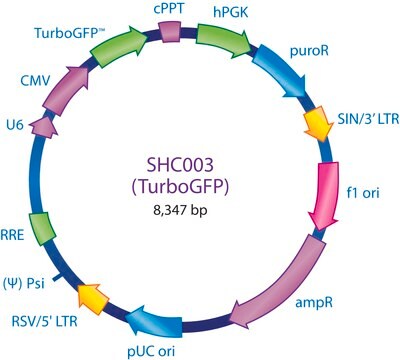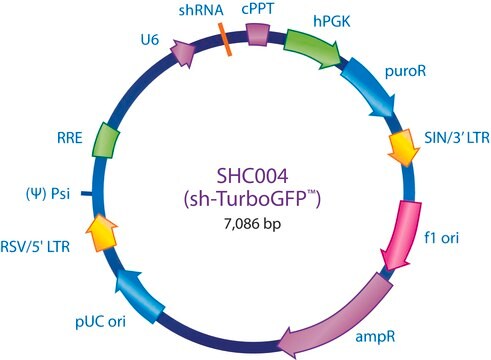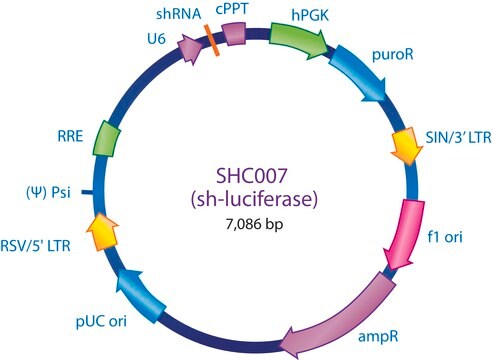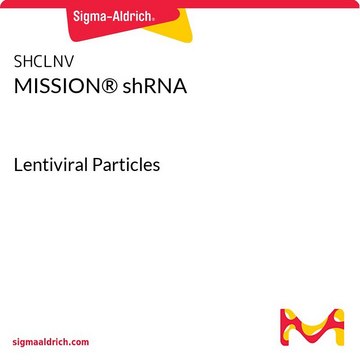SHC016
MISSION® pLKO.1-puro Non-Target shRNA Control Plasmid DNA
Targets no known genes from any species
Sinônimo(s):
MISSION® Control Vectors, negative control, negative shRNA control, non-target control, non-target shRNA, non-target shRNA control, shRNA control
About This Item
Produtos recomendados
Nível de qualidade
linha de produto
MISSION®
concentração
500 ng/μL in TE buffer; DNA (10μg of plasmid DNA)
Condições de expedição
dry ice
temperatura de armazenamento
−20°C
Procurando produtos similares? Visita Guia de comparação de produtos
Categorias relacionadas
Descrição geral
Aplicação
- in tumor cells for multicolour imaging
- in human adult low calcium temperature keratinocytes
- in mouse embryonic fibroblasts, to study the biological functions of IP6K1 (inositol hexakisphosphate kinase)
- to study the function of Zac1 (zinc finger protein regulating apoptosis and cell cycle arrest) expression in astroglial differentiation
Informações legais
recomendado
Código de classe de armazenamento
10 - Combustible liquids
Classe de risco de água (WGK)
WGK 2
Ponto de fulgor (°F)
Not applicable
Ponto de fulgor (°C)
Not applicable
Escolha uma das versões mais recentes:
Certificados de análise (COA)
It looks like we've run into a problem, but you can still download Certificates of Analysis from our Documentos section.
Se precisar de ajuda, entre em contato Atendimento ao cliente
Já possui este produto?
Encontre a documentação dos produtos que você adquiriu recentemente na biblioteca de documentos.
Os clientes também visualizaram
Nossa equipe de cientistas tem experiência em todas as áreas de pesquisa, incluindo Life Sciences, ciência de materiais, síntese química, cromatografia, química analítica e muitas outras.
Entre em contato com a assistência técnica